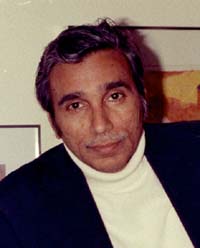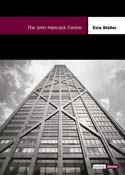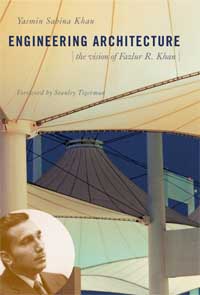|

Yasmin Sabina Khan
When my father died in March 1982, I was a senior in college studying
structural engineering. My father hadn’t pushed me into engineering;
in fact, he never even suggested it.
| |
| |
 |
| |
| |
Dr.
Khan at home in the 1970s. |
| |
My initial inclination had been to teach mathematics, and he had supported
this ambition.
But once I started my course work at the University of Michigan, I found
myself drawn to engineering. I was initially interested in mechanical
drafting (this was in the days when the craft of hand drafting was an
integral part of design). Though my drafting skills were limited, I proved
to have some talent for other aspects of design. My father was pleased
with my studies, and I came to depend upon his advice regarding my coursework
just as I relied on him in so many other ways.
During this time I got a sense of his remarkable talent for explaining
structural principles, and I was inspired by his sincere enthusiasm for
the field.
| |
 |
| |
| Building
Blocks: The John Hancock Center |
| |
|
During the last few years, I have heard from my father’s colleagues
that his excitement about structural systems and design challenges inspired
them as well.
As an introduction to a photo essay on the John Hancock Center, I have
written a brief review of my father and architect Bruce Graham's collaborative
design for this 100-story tower. It can be found in Building Blocks:
The John Hancock Center (Yasmin Sabina Khan, New York: Princeton Architectural
Press, 2000).
I have written a book about my father, published by W.W. Norton &
Company in July 2004 and titled Engineering Architecture: The Vision
of Fazlur R. Khan. The biographical account focuses on my father’s
design projects at Skidmore, Owings & Merrill (SOM); yet it examines
his innovations within the context of his personal beliefs and the social
setting of the time in which he practiced. I have tried to convey my father’s
personal character and philosophy along with his manner of working with
people, because these were important aspects of his design accomplishments.
In an opening chapter about my father’s childhood in Bengal I describe
my grandfather’s vital influence on his education and personal growth.
| |
| |
 |
| |
| |
Engineering Architecture: The Vision of Fazlur R. Khan |
| |
Chapter 2 summarizes my father’s graduate studies at the University
of Illinois, where he was able to study for three years because of combined
Fulbright and Pakistani government scholarships, and recounts his first
design work in the Chicago office of SOM. In chapters 3 through 10, I follow
my father through the 1960s and into the early 1970s. It was during this
decade that he developed the series of efficient structural systems for
high-rise design that culminated in the composite system and the bundled-tube
system—the latter initiated in the Sears Tower. As companies started
to expand their offices in the suburbs in the early 1970s, he also designed
an elegant (and again progressive) lightweight cable-stayed roof structure
for Baxter International’s headquarters outside of Chicago. In presenting
each building project I examine the architectural building program that
guided the design, how my father’s work with graduate students in
the architecture school at the Illinois Institute of Technology enabled
him to investigate building concepts, and the process of design, as the
SOM office realized his pioneering building schemes.
During the 1970s a series of events, beginning with a crisis in my father’s
homeland to which he devoted considerable effort, caused him to turn his
attention to less developed countries and to architectural and urban planning.
Part Three of the book opens with events in Bangladesh in 1971; it then
turns to the SOM design projects in the Middle East that occupied my father
for much of the decade. In chapter 11 I describe the large-scale developments
that were initiated in the Middle East and the historical environment
associated with such projects, which greatly interested my father. Chapters
12 and 13 are devoted to two large projects in Saudi Arabia: the Hajj
Terminal for the Jeddah airport, which significantly advanced fabric tensile
structure technology, and the educational plan and architectural design
for a university campus in Mecca.
Chapters 14 and 15 return to projects in the United States in the early
1980s. In a design for an office/retail/apartment complex in Chicago,
Onterie Center, my father transformed the trussed tube structural system
of his John Hancock Center design into a diagonalized framed tube in reinforced
concrete, thereby combining the two efficient systems of the trussed tube
and the framed tube. As building heights (or at least developer’s
ambitions) began to soar, he then conceived of a telescoping multiple-tube
form—a megastructure—with wind portals to disrupt the effect
of the wind, which, although never constructed, pointed toward future
skyscraper design.
I close the book with a short chapter that reflects on my father’s
life and career, and on the example that he set for those who knew and
worked with him. His special kindness and enthusiasm, together with his
unique talents and leadership, are the traits by which his colleagues
remember him.
I would be glad to hear from anyone who knew my father. Also, please
feel free to contact me at ysbyron@fazlurrkhan.com if you have questions
about the book.
| |
 |
| I would like to thank Paul and Jeannette at customline.com
for turning my vision for a site for my father into reality. |
|
|

